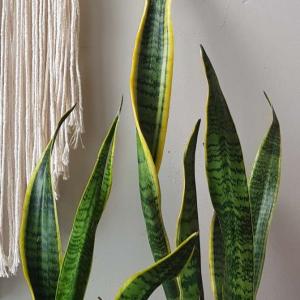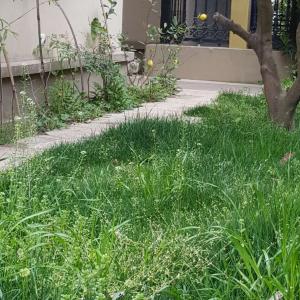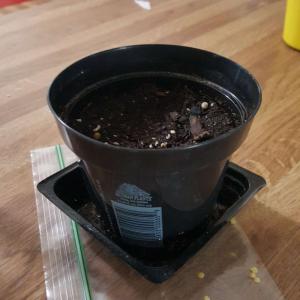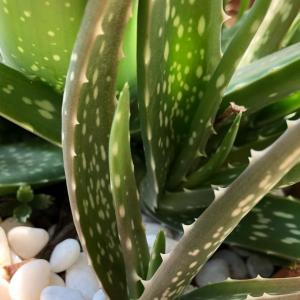文章
Miss Chen
2018年04月20日

Tender turnip greens are for some a well-kept garden secret. While chard and kale are popular greens in the garden, some people are devoted to other greens such as mustard, beet or turnips. Healthy greens are not only delicious on the dinner table, they're important to the health of the whole plant. Turnips are prey to a number of pests and require careful attention to keep them free of insects. It is worth protecting turnip greens -- they are high in vitamins E and C, have usable calcium, folate and a full range of amino acids.

Common Pests
Turnips and other greens are especially bothered by several insect pests. Aphids are a number one culprit. They suck the sap from the plant. Cabbage loopers love turnip greens just as you do. Flea beetles can be a major problem. Take the time to learn what these turnip pests look like and how to spot the adults and larvae. This will give you an idea where to target your approach to getting rid of them.
Garden Health
Prevention is always the fist line of defense when it comes to any garden pests. Keep weeds away from your plants to reduce habitat for insects. Insects are interdependent, so if one type is encouraged by weeds or other foods they may like, the ones who prefer leafy greens may move in too. Keep the ground free of dead and dying plants and rotted vegetables to reduce their food. Keep your turnips well nourished with rich compost because healthy plants have more resistance to pests.
Beneficial Insects
Introducing beneficial insects to the turnip bed can reduce the population of harmful insects. Examples of these are ladybugs, green lacewings and beneficial nematodes. You can purchase them at some garden centers or through an online distributor. These are predator and parasitic insects that can help you battle the undesirable bugs on your turnip greens. Make your garden attractive to them by providing other foods they like such as flowers for nectar.
Synthetic Pesticides
The synthetic pesticides for turnips include spinosad, whose makers claim it has low environmental impact, long residual effect and is no harmful to beneficial insects. For aphids or whiteflies use pymetrozine. It is a direct spray specifically for this type of bug and can kill them quickly.

Natural Insecticides
Turnips can be benefited by an interplanting of some other plants. These discourage insects that target turnips. They include mint, onions and garlic or herbs like anise, chives and coriander. You can also combine household products to create a useful natural pesticide. A homemade horticultural oil can be made from soybean oil mixed with liquid dish-washing soap to suffocate the bugs. Some people simply spray them off with a hose. But if you do this, make sure to also remove them from the ground beneath the plant. Purchase diatomaceous earth at a garden center to dust on plants to deter aphids.

Common Pests
Turnips and other greens are especially bothered by several insect pests. Aphids are a number one culprit. They suck the sap from the plant. Cabbage loopers love turnip greens just as you do. Flea beetles can be a major problem. Take the time to learn what these turnip pests look like and how to spot the adults and larvae. This will give you an idea where to target your approach to getting rid of them.
Garden Health
Prevention is always the fist line of defense when it comes to any garden pests. Keep weeds away from your plants to reduce habitat for insects. Insects are interdependent, so if one type is encouraged by weeds or other foods they may like, the ones who prefer leafy greens may move in too. Keep the ground free of dead and dying plants and rotted vegetables to reduce their food. Keep your turnips well nourished with rich compost because healthy plants have more resistance to pests.
Beneficial Insects
Introducing beneficial insects to the turnip bed can reduce the population of harmful insects. Examples of these are ladybugs, green lacewings and beneficial nematodes. You can purchase them at some garden centers or through an online distributor. These are predator and parasitic insects that can help you battle the undesirable bugs on your turnip greens. Make your garden attractive to them by providing other foods they like such as flowers for nectar.
Synthetic Pesticides
The synthetic pesticides for turnips include spinosad, whose makers claim it has low environmental impact, long residual effect and is no harmful to beneficial insects. For aphids or whiteflies use pymetrozine. It is a direct spray specifically for this type of bug and can kill them quickly.

Natural Insecticides
Turnips can be benefited by an interplanting of some other plants. These discourage insects that target turnips. They include mint, onions and garlic or herbs like anise, chives and coriander. You can also combine household products to create a useful natural pesticide. A homemade horticultural oil can be made from soybean oil mixed with liquid dish-washing soap to suffocate the bugs. Some people simply spray them off with a hose. But if you do this, make sure to also remove them from the ground beneath the plant. Purchase diatomaceous earth at a garden center to dust on plants to deter aphids.
0
0
Yeowww! Pintac:Are those called Colorobie? And I’m sure that’s not spelled right.
Yeowww! Pintac:Paprika?
文章
Miss Chen
2018年04月19日

Few things beat a salad made from a large handful of fresh lettuce (Lactuca sativa var. capitata) straight from the garden. While you can allow both loose-leaf and head-style lettuce plants to reach full size in the garden, then pull or cut them at the roots to harvest a whole lettuce, growing lettuce lets you prolong the season by cutting it leaf by leaf or using a technique called cut-and-come-again.
Leaf by Leaf Cutting

You can cut leaves of edible size from the stem of the plant, leaving the small-leaved center intact and growing. Leaves can be pinched off by hand, but cutting may damage less tissue than pinching. Wipe the scissor blades clean between cuts with a 1:9 solution of bleach and water, to keep from spreading plant diseases. A 1/3 cup of bleach in 3 cups of water will keep tools clean for cutting and other garden chores.
Cut-and-Come-Again

The second cutting method is more drastic but still allows the plant to continue growing. For cut-and-come-again, cut the entire plant parallel to the ground and approximately 1 inch from the soil. The center will regenerate first, and the plant will then begin to form new leaves that grow to edible size. Clean your tools before cutting each plant.
Lettuces for Leaf-by-Leaf Cutting

Loose-head, or loose-leaf, varieties are best for leaf-by-leaf cutting. Grand Rapids varieties like "Red Sails" and "Black-Seeded Simpson" have broad, ruffled leaves. Lobed-leaf varieties, commonly dubbed "oakleaf," also have large, loose clusters of leaves, making removal of a leaf or two easy. Planting a loose-head variety in a large pot lets you rotate the pot, gathering leaves from all the way around the plant. Because the stem lengthens as lettuce grows toward blooming and going to seed, or "bolting," your remaining plant may vaguely resemble a palm tree, but the leaves will remain sweet so long as temperatures stay below 75 to 80 degrees Fahrenheit.
Cut-and-Come-Again

Cutting the whole plant down to 1 inch yields a large harvest of loose-head leaves. You can harvest like this two to three times before the quality of the leaves declines. Butterhead and Romaine lettuce varieties can also be cut down to 1 inch, but the remaining stubs often generate a less vigorous but edible second growth.
Cutting and Timing

Both cutting methods work best when carefully timed. Although it may take a little practice from one variety to another, leaves that are just getting crisp and starting to look mature are ready for cutting. Old leaves will have poor or bitter flavor, no matter how they are harvested. The time of day can have a significant effect on the quality of the lettuce leaves. Leaves harvested early in the morning, around 7 a.m., contain approximately twice the plant sugars of leaves harvested at 2 p.m. Cut early for a sweet harvest. Early morning cutting also lets plant wounds begin to heal before exposure to hot sun threatens to scorch tissues.
Leaf by Leaf Cutting

You can cut leaves of edible size from the stem of the plant, leaving the small-leaved center intact and growing. Leaves can be pinched off by hand, but cutting may damage less tissue than pinching. Wipe the scissor blades clean between cuts with a 1:9 solution of bleach and water, to keep from spreading plant diseases. A 1/3 cup of bleach in 3 cups of water will keep tools clean for cutting and other garden chores.
Cut-and-Come-Again

The second cutting method is more drastic but still allows the plant to continue growing. For cut-and-come-again, cut the entire plant parallel to the ground and approximately 1 inch from the soil. The center will regenerate first, and the plant will then begin to form new leaves that grow to edible size. Clean your tools before cutting each plant.
Lettuces for Leaf-by-Leaf Cutting

Loose-head, or loose-leaf, varieties are best for leaf-by-leaf cutting. Grand Rapids varieties like "Red Sails" and "Black-Seeded Simpson" have broad, ruffled leaves. Lobed-leaf varieties, commonly dubbed "oakleaf," also have large, loose clusters of leaves, making removal of a leaf or two easy. Planting a loose-head variety in a large pot lets you rotate the pot, gathering leaves from all the way around the plant. Because the stem lengthens as lettuce grows toward blooming and going to seed, or "bolting," your remaining plant may vaguely resemble a palm tree, but the leaves will remain sweet so long as temperatures stay below 75 to 80 degrees Fahrenheit.
Cut-and-Come-Again

Cutting the whole plant down to 1 inch yields a large harvest of loose-head leaves. You can harvest like this two to three times before the quality of the leaves declines. Butterhead and Romaine lettuce varieties can also be cut down to 1 inch, but the remaining stubs often generate a less vigorous but edible second growth.
Cutting and Timing

Both cutting methods work best when carefully timed. Although it may take a little practice from one variety to another, leaves that are just getting crisp and starting to look mature are ready for cutting. Old leaves will have poor or bitter flavor, no matter how they are harvested. The time of day can have a significant effect on the quality of the lettuce leaves. Leaves harvested early in the morning, around 7 a.m., contain approximately twice the plant sugars of leaves harvested at 2 p.m. Cut early for a sweet harvest. Early morning cutting also lets plant wounds begin to heal before exposure to hot sun threatens to scorch tissues.
0
0
文章
Miss Chen
2018年04月19日

You can create a low-cost patio garden by growing cucumbers in a 5-gallon bucket. The process requires few supplies and works as well as using more expensive containers sold at garden supply stores. You can purchase a new bucket from a home supply store or recycle one used for food storage, although you want to avoid using buckets that previously contained chemicals to prevent passing toxic residue to the cucumbers you are consuming. This technique also works well for other vegetable plants, including peppers, squash and tomatoes.

Step 1
Wash the 5-gallon bucket with soap and water to remove all dirt and residue. Rinse the bucket well and let it air-dry.
Step 2
Drill six to eight half-inch-diameter drainage holes through the bottom of the bucket to prevent water pooling around the roots. Space the holes evenly for best results with drainage.
Step 3
Fill the bucket two inches from the top with a well-draining vegetable potting soil available at garden supply stores.
Step 4
Mix a slow-release vegetable fertilizer into the soil to provide nutrients throughout the growing season. A second option for fertilizer is to apply a 20-20-20 water-soluble fertilizer to the soil every other week from planting to harvest.

Step 5
Dig a 4-inch-deep hole in the center of the bucket. Remove the cucumber seedling from the growing container and set the root ball into the hole so the first set of leaves is just above the soil level.
Step 6
Place the bucket in an area that receives full sun. Set the bucket on two bricks or wood blocks to keep the bottom elevated for proper drainage.
Step 7
Soak the soil with water until it flows out the bottom drainage holes. Apply water to the soil, instead of pouring it over the plant. Monitor the soil moisture and provide supplemental water three or four times a week to keep it evenly moist. Container growing environments dry out quickly during periods of no rain.
Step 8
Harvest the cucumbers once they reach a mature length to stimulate new blossom and cucumber growth. Read the information listed on the seedling package or seed packet to determine the approximate mature length of the variety planted.

Step 1
Wash the 5-gallon bucket with soap and water to remove all dirt and residue. Rinse the bucket well and let it air-dry.
Step 2
Drill six to eight half-inch-diameter drainage holes through the bottom of the bucket to prevent water pooling around the roots. Space the holes evenly for best results with drainage.
Step 3
Fill the bucket two inches from the top with a well-draining vegetable potting soil available at garden supply stores.
Step 4
Mix a slow-release vegetable fertilizer into the soil to provide nutrients throughout the growing season. A second option for fertilizer is to apply a 20-20-20 water-soluble fertilizer to the soil every other week from planting to harvest.

Step 5
Dig a 4-inch-deep hole in the center of the bucket. Remove the cucumber seedling from the growing container and set the root ball into the hole so the first set of leaves is just above the soil level.
Step 6
Place the bucket in an area that receives full sun. Set the bucket on two bricks or wood blocks to keep the bottom elevated for proper drainage.
Step 7
Soak the soil with water until it flows out the bottom drainage holes. Apply water to the soil, instead of pouring it over the plant. Monitor the soil moisture and provide supplemental water three or four times a week to keep it evenly moist. Container growing environments dry out quickly during periods of no rain.
Step 8
Harvest the cucumbers once they reach a mature length to stimulate new blossom and cucumber growth. Read the information listed on the seedling package or seed packet to determine the approximate mature length of the variety planted.
0
1
文章
Miss Chen
2018年04月19日

Cucumbers (Cucumis sativus) are favorites in the home vegetable garden due to their versatility and flavor. Unfortunately, cucumbers and other cucurbits are prone to a number of diseases and pests. Several of these cause the leaves to yellow; proper identification of the culprit is necessary to curb the problem.

General Care
Healthy plants are less susceptible to pests and diseases, although not immune. The ideal site for cucumbers is one with full sun and an extremely fertile, well-drained soil with plenty of organic matter. Planting too early can cause issues, as well, as drastic changes in temperature from day to night can cause issues with plant production.
Arthropod Pests
Whiteflies and spider mites can cause the leaves of your cucumber vines to yellow, albeit differently.
Whiteflies congregate on the undersides of leaves. The tops of leaves will become yellowish while a sooty mold will be underneath. When the cucumber vine is disturbed, these tiny, white insects disperse into a cloud of flying insects. Removing infested leaves can help curb their population and damage.
Spider mites, on the other hand, cause yellow stippling of the leaves that can eventually result in completely yellow, then bronze, leaves. You may notice web-like materials on the undersides of leaves.
In the case of either pest, spray a ready-to-use insecticidal soap over the entire plant, including the undersides of leaves. Insecticidal soaps must come in contact with the pests to be effective. Repeat every other week as needed; some insecticidal soaps are safe enough to use up to the day of harvest.
Cucumber beetle infestations create other problems that create yellowing in plants like fusarium wilt. The green-yellow spotted cucumber beetle has a black head with black spots, while the striped cucumber beetle has black stripes on its wings. Both beetles attack the cucumber's foliage, runners and immature fruit, leaving holes or a skeletonized appearance. Remove the beetles by hand-picking and dumping into a container of soapy water.

Fungal Diseases
A few fungal diseases of cucumber can result in yellow leaves.
Fusarium wilt, a soil-borne fungal disease which can be carried by cucumber beetles, causes plants to become stunted and yellow; the runners die slowly. Fungicides are not effective against this disease. Dig up and destroy any infected plants. In future years, rotate crops and select disease-resistant cucumber varieties.
Downy mildew, another fungal disease, is caused by poor air circulation, wet and humid conditions, too much nitrogen fertilizer, weeds in the garden and lack of proper sunlight. Symptoms first appear as irregularly shaped yellow spots on the upper part of leaves and a powdery mold on the undersides. Thin out leaves and plants to improve air circulation to avoid the problem, avoid overhead irrigation and remove infected plants to reduce the risk of spread. When removing infected plants from the garden, be sure not to spread the disease through handling healthy plants or through infected tools. Sterilize your tools by wiping them off with alcohol before using them on unaffected plants and wash your hands. Many varieties of cucumbers are resistant to this common disease.
Nutritional and Environmental Issues
Cucumbers are heavy feeders, meaning they may need more fertilizer or organic matter in the soil than other veggies. Pale, yellowing leaves may be a sign of nitrogen deficiency. If this is the case, apply 1 tablespoon of high-nitrogen fertilizer, such as 33-0-0, around each cucumber hill one week after blooms develop; repeat in three weeks. Water thoroughly after fertilizing.
Another issue may be low levels of sunlight reaching certain leaves. If the lower leaves are yellowing, consider clipping a few of the upper leaves on the vine to allow more sunlight and air circulation to this part of the plant.

General Care
Healthy plants are less susceptible to pests and diseases, although not immune. The ideal site for cucumbers is one with full sun and an extremely fertile, well-drained soil with plenty of organic matter. Planting too early can cause issues, as well, as drastic changes in temperature from day to night can cause issues with plant production.
Arthropod Pests
Whiteflies and spider mites can cause the leaves of your cucumber vines to yellow, albeit differently.
Whiteflies congregate on the undersides of leaves. The tops of leaves will become yellowish while a sooty mold will be underneath. When the cucumber vine is disturbed, these tiny, white insects disperse into a cloud of flying insects. Removing infested leaves can help curb their population and damage.
Spider mites, on the other hand, cause yellow stippling of the leaves that can eventually result in completely yellow, then bronze, leaves. You may notice web-like materials on the undersides of leaves.
In the case of either pest, spray a ready-to-use insecticidal soap over the entire plant, including the undersides of leaves. Insecticidal soaps must come in contact with the pests to be effective. Repeat every other week as needed; some insecticidal soaps are safe enough to use up to the day of harvest.
Cucumber beetle infestations create other problems that create yellowing in plants like fusarium wilt. The green-yellow spotted cucumber beetle has a black head with black spots, while the striped cucumber beetle has black stripes on its wings. Both beetles attack the cucumber's foliage, runners and immature fruit, leaving holes or a skeletonized appearance. Remove the beetles by hand-picking and dumping into a container of soapy water.

Fungal Diseases
A few fungal diseases of cucumber can result in yellow leaves.
Fusarium wilt, a soil-borne fungal disease which can be carried by cucumber beetles, causes plants to become stunted and yellow; the runners die slowly. Fungicides are not effective against this disease. Dig up and destroy any infected plants. In future years, rotate crops and select disease-resistant cucumber varieties.
Downy mildew, another fungal disease, is caused by poor air circulation, wet and humid conditions, too much nitrogen fertilizer, weeds in the garden and lack of proper sunlight. Symptoms first appear as irregularly shaped yellow spots on the upper part of leaves and a powdery mold on the undersides. Thin out leaves and plants to improve air circulation to avoid the problem, avoid overhead irrigation and remove infected plants to reduce the risk of spread. When removing infected plants from the garden, be sure not to spread the disease through handling healthy plants or through infected tools. Sterilize your tools by wiping them off with alcohol before using them on unaffected plants and wash your hands. Many varieties of cucumbers are resistant to this common disease.
Nutritional and Environmental Issues
Cucumbers are heavy feeders, meaning they may need more fertilizer or organic matter in the soil than other veggies. Pale, yellowing leaves may be a sign of nitrogen deficiency. If this is the case, apply 1 tablespoon of high-nitrogen fertilizer, such as 33-0-0, around each cucumber hill one week after blooms develop; repeat in three weeks. Water thoroughly after fertilizing.
Another issue may be low levels of sunlight reaching certain leaves. If the lower leaves are yellowing, consider clipping a few of the upper leaves on the vine to allow more sunlight and air circulation to this part of the plant.
1
1






















